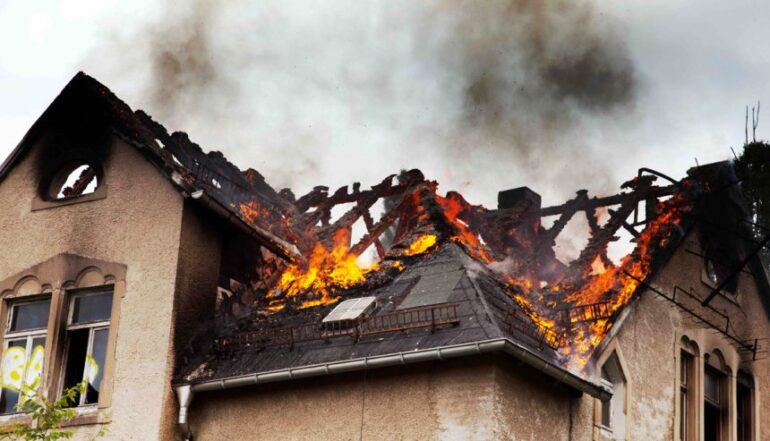Experiencing a fire in your home or business can be one of the most overwhelming events in life. While the immediate aftermath often brings feelings of shock and uncertainty, misinformation can make the situation even more challenging. Myths and misconceptions about fire damage restoration can lead to costly mistakes, unsafe decisions, and longer recovery times.
By separating fact from fiction, you can make informed choices that help restore your property safely and efficiently.
Myth 1: You Can Handle All Fire Damage Cleanup Yourself
Many people believe that fire damage is simply a matter of removing debris and repainting walls. In reality, smoke and soot penetrate deeply into porous materials like wood, drywall, and upholstery. Without specialized equipment and cleaning agents, these contaminants can linger, causing long-term odors and health issues.
Professional fire damage restoration involves:
- Removing hazardous residues
- Neutralizing odors
- Restoring structural integrity
- Preventing secondary damage from water used during firefighting
While it’s possible to handle small cleaning tasks, attempting to manage the entire process alone can lead to incomplete restoration and potential safety hazards.
Myth 2: Smoke Damage Is Only a Cosmetic Issue
Smoke damage often appears as discoloration on walls and ceilings, leading some to believe it’s purely cosmetic. However, smoke contains microscopic particles that can be harmful when inhaled. These particles can settle in HVAC systems, furniture, and other hidden areas, affecting indoor air quality long after the fire.
Addressing smoke damage promptly is essential to avoid respiratory problems and lingering odors that can make a home uncomfortable.
Myth 3: All Items Damaged by Fire Must Be Discarded
It’s a common misconception that once something is damaged by fire, it can’t be salvaged. While certain items may be beyond repair, many can be restored with professional cleaning techniques. Specialized restoration processes can often save:
- Furniture
- Electronics
- Clothing and textiles
- Important documents
Assessing each item individually allows you to determine what can be restored rather than automatically replacing everything.
Myth 4: Fire Damage Restoration Only Involves Cleaning
Cleaning is only one aspect of restoration. Depending on the severity of the fire, the process may also include:
- Structural repairs
- Electrical and plumbing inspections
- Repainting and refinishing
- Odor removal treatments
A thorough fire damage restoration plan addresses both visible and hidden issues to ensure the property is safe and livable again.
Myth 5: It’s Safe to Move Back In Once the Flames Are Out
Extinguishing the fire is just the first step. The aftermath may include unstable structures, toxic residues, and compromised electrical systems. Even if the damage appears minimal, unseen hazards can pose serious risks.
A professional assessment ensures that all safety concerns are addressed before reoccupying the property.
Myth 6: Quick Fixes Save Money
While it may seem tempting to cut corners to reduce costs, quick fixes often lead to more expensive repairs down the road. Skipping essential steps like thorough cleaning or structural inspections can allow damage to worsen over time.
Investing in proper restoration from the start saves money by preventing secondary damage, such as mold growth or electrical failures.
Myth 7: Any Contractor Can Handle Fire Damage Restoration
Not all contractors have the expertise or equipment required for fire damage restoration. The process demands specialized training, certifications, and tools to ensure safe and effective recovery. Choosing a team experienced in handling fire-related issues ensures that the work meets industry standards.
Companies like Secure Restoration have the skills, resources, and knowledge to address fire damage comprehensively, from smoke removal to structural repairs.
The Importance of Acting Quickly
Delays in starting fire damage restoration can make recovery more difficult and expensive. Lingering soot and smoke can cause further deterioration, while water from firefighting efforts can lead to mold growth within days.
Starting the restoration process promptly:
- Minimizes health risks
- Reduces repair costs
- Speeds up the return to normal life
How to Avoid Falling for Myths
Education is the best defense against misinformation. Before making decisions about fire damage restoration:
- Consult reputable sources for accurate information.
- Seek professional assessments from certified restoration specialists.
- Avoid relying on hearsay or outdated advice.
By staying informed, you can avoid common pitfalls and make the restoration process smoother and more efficient.
Final Thoughts
The road to recovery after a fire is challenging, but avoiding common myths can make it far less daunting. Understanding the true scope of fire damage, the importance of thorough cleaning, and the need for professional expertise will help you make the best decisions for your property.
Prompt, informed action ensures that your home or business is restored to a safe and comfortable condition. Partnering with trusted experts like Secure Restoration provides the guidance and support needed for a full, successful recovery.






